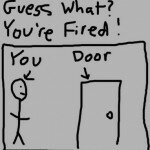Here’s my thesis statement of the day: communication is hard and it’s constantly getting F’ed up. In fact, in my dozen or so years of consulting it’s without question the number one issue facing all the leadership teams and management teams I’ve worked with. These days I work primarily with startups, but these principles work with organizations of any size.
Facilitating makes active listening more effective.
 |
| Credit: The Essential Facilitator |
How many times have you been advised to “exhibit good active listening” in meetings? Usually people say this when they’re referring to body language cues like leaning forward, keeping an open body position, and sometimes making affirming motions like nodding and keeping eye contact. All of this stuff is good practice, but personally I find it lets me off the hook a little too easily.
There are different reasons I might be in a meeting. Maybe I’m supporting the efforts of other people in the meeting. Or maybe it’s a political thing and I just have to be there because someone more important than me will be upset if I’m not there. Maybe (!!) I’m actually there to accomplish something. Regardless, I thinkactive facilitation should precede and lead into active listening.
The trick is pulling this off when you are not the natural leader of the meeting. There are dozens of blog posts to work on around that issue that I’ll keep out of scope for now.
Facilitation means leading the discussion from an objective viewpoint. To be sure, it’s a lot easier to do when you actually are objective, for example if you are hired as a third party consultant or meeting facilitator. Still, it’s a stance I believe you can take to keep your meeting leadership skills front and center. Good facilitation skills take years to hone, but there are some base patterns you can practice that will make you more effective while you put in your 10,000 hours toward mastery.
Think of facilitation as a cycle that answers three basic questions:
- What happened?
- So what does that mean to us?
- Now what do we do about it?
What happened?
The first question gets us all discussing our observations of the current situation, which should be whatever we’re having the meeting about. (You do have a reason for your meeting, right?) What I often find is we’re all different people with different backgrounds and experiences and we all describe the same circumstance slightly differently with slightly different words. This first question can help us establish a common vocabulary, which makes communication errors far less likely. To find out how and why this matters go around to three people you work with and ask them all what they mean when they say the word “project.” You’ll be amazed at the differences even among close colleagues. Now imagine you never asked and you are all having a meeting about next year’s strategic projects. See the problem?
So what does that mean to us?
The next gets to the practical applicability of whatever is we’re talking about to us, this team, right now. Now I know you are all nodding and smiling when I tell you I hate being in a meeting where the topic getting the most attention has nothing to do with anything I’m working on. To be fair this can be an indication that I’m in the wrong meeting and realized too late to leave. So since I’m stuck this question can bring to the forefront how today’s topic impacts us in tangible ways. What we’re getting to here is the meat of the issue — why does this matter to us? It’s a great way to unearth ideas and tangents, but be careful not to fork into a hundred other directions. Remember you might need to loop back and make sure everyone is using vocabulary the same way.
Now what do we do about it?
Now we’re getting to the meat. We’ve got to leave this meeting with action items in the very real sense that GTD requires by asking, “What’s the next action?” We’ve established at least a passing agreement on what happened and we’ve discussed the relevance of that happening (or discovered maybe it doesn’t matter). Now we have to leave this gathering with some collection of tasks or follow up items that will induce us as a group to make sure something is different next time we end up in this room. Finishing up the discussion around this point and not letting the group off the hook before it’s done is probably the most critical step to effectiveness. Don’t have a meeting if you can’t get to this point.
Try it and tell me what happens!
The literature on effective meetings is broad and deep. Consultants (like me… guilty) make millions yapping about this topic. At the end of the day it’s a discipline you have to develop for yourself and you’ll cobble together your own methods. It’s my hope this post sets you on solid foundation to start that effort.



 Going on your own is less risky
Going on your own is less risky Why I think you should take early startup revenue even when it’s off target
Why I think you should take early startup revenue even when it’s off target Get a Mentor
Get a Mentor Getting fired from my corporate job was a gift
Getting fired from my corporate job was a gift
Leave a Reply